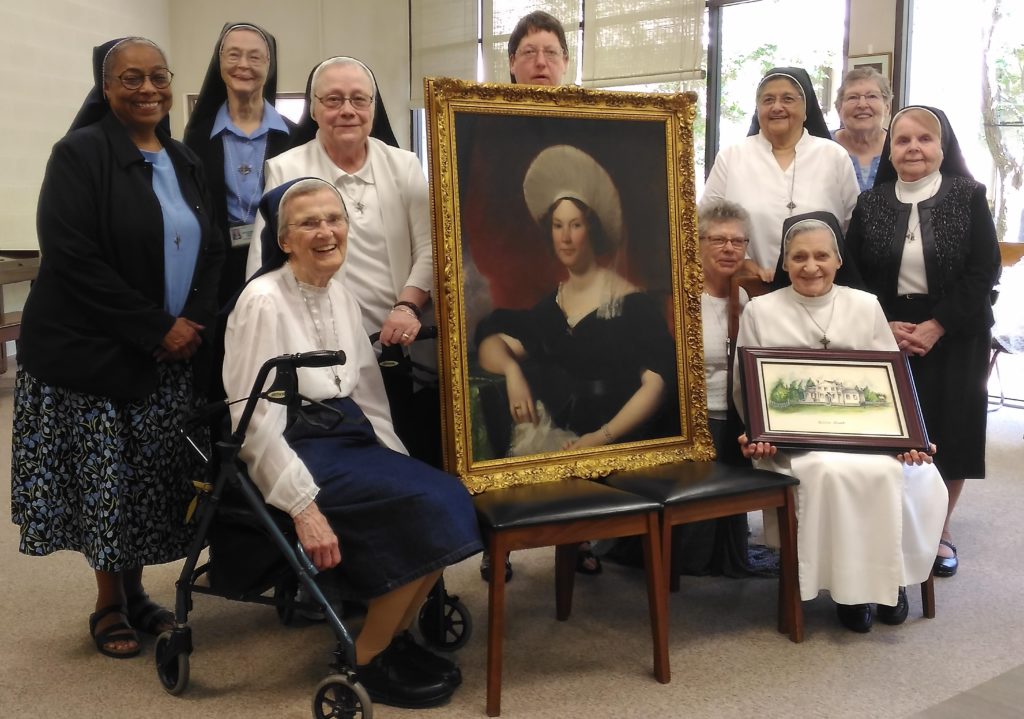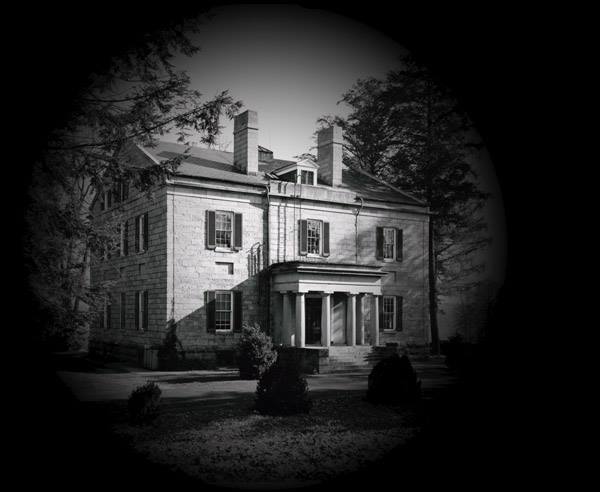 On Sunday, September 24, 2017 the Good Shepherd Sisters (serving in Baltimore, MD) invited our Friars (serving from the Portiuncula Friary in Ellicott City, MD) to lunch. The Good Shepherd Sisters arrived in Baltimore in 1864 and until recently ministered at the Good Shepherd Center in Baltimore, a residential treatment facility for adolescent girls with emotional and behavioral difficulties. Our friars began a relationship of spiritual care with the sisters many years ago. For several years, the friars serving from the Immaculate Heart of Mary Friary, in Baltimore, MD, served the sisters and those in their care as one of their Sunday Mass calls. With the building of our Provincial House (administrative offices for the Province) in Ellicott City, this Mass call was transferred to the friars of the Portiuncula Friary, in 1991. The Sisters closed their residential treatment center in the early Spring of 2017 and they will be moving on; many to live in housing prepared for them by the Sisters of Saints Cyril and Methodius in Danville, PA. We friars will continue to pray for these Sisters as they move onto their new homes.
On Sunday, September 24, 2017 the Good Shepherd Sisters (serving in Baltimore, MD) invited our Friars (serving from the Portiuncula Friary in Ellicott City, MD) to lunch. The Good Shepherd Sisters arrived in Baltimore in 1864 and until recently ministered at the Good Shepherd Center in Baltimore, a residential treatment facility for adolescent girls with emotional and behavioral difficulties. Our friars began a relationship of spiritual care with the sisters many years ago. For several years, the friars serving from the Immaculate Heart of Mary Friary, in Baltimore, MD, served the sisters and those in their care as one of their Sunday Mass calls. With the building of our Provincial House (administrative offices for the Province) in Ellicott City, this Mass call was transferred to the friars of the Portiuncula Friary, in 1991. The Sisters closed their residential treatment center in the early Spring of 2017 and they will be moving on; many to live in housing prepared for them by the Sisters of Saints Cyril and Methodius in Danville, PA. We friars will continue to pray for these Sisters as they move onto their new homes.
During our September 24th lunch, an original painting of Emily Caton McTavish, an early benefactor of the Sisters, was gifted to our friars. The painting hung in their original motherhouse, in Baltimore. A copy of the same portrait is in the Manor House of our Carrollton Hall Historic Site. This original artwork was their going-away gift to the friars for our many years of spiritual care (Mass, Confessions, and Spiritual Direction). The painting itself is an important work of early American art and will certainly be one of the jewels of the collection at the Carrollton Hall Historic Site. Another gift was a small painting done by one of the sisters of “Willow Brook,” another home of Emily Caton McTavish.
Carrollton Hall Historic Site stands on the ground of our Shrine of St. Anthony, in Ellicott City, MD. It includes a house museum honoring the memories of those who lived there and those whose influence sculpted the United State’s most valued heritage, especially the Freedom of Religion. It was the home of Emily Caton McTavish (+1867), a favorite granddaughter of Charles Carroll of Carrollton (+1832), one of four Marylanders to sign the Declaration of Independence and the ONLY Roman Catholic. Members of the Carroll family have served the U.S. in government and as benefactors of religious orders & universities, even giving the land needed to create the U.S. Capital in Washington, DC. A cousin of Charles Carroll, Baltimore’s Bishop John Carroll, SJ, became the nation’s first Catholic Bishop.
In his later years, Charles Carroll wished to give his granddaughter Emily a lasting tribute of his affection, as she was a self-sacrificing and endearing caretaker; nursing everyone through illnesses and crises. In 1832, a retaining wall was completed, leveling a shady hill on which a great neoclassical house of Woodstock granite was constructed. The house was named “Carrollton Hall,” the 1000 acre southwest parceling from Carroll’s nearby colonial homestead, Doughoregan Manor. The parcel was named “Folly Quarter” and it became home to Emily Caton McTavish and her family.
In 1928, Folly Quarter was purchased by Friar Justin Figas, OFM Conv., a Major Superior of the Franciscan Friars Conventual on the East Coast, to be used as a novitiate for training young men for the Franciscan priesthood and brotherhood, in the Roman Catholic Church. As grand as it was, the manor house became too small for the growing community. Two years later Friar Benedict Przemielewski, OFM Conv. was commissioned to design a new novitiate, on the same property. He chose to model it after the Sacro Convento, the 13th century Italian motherhouse of the Franciscan Order, attached to the Basilica where Saint Francis of Assisi is buried. In 1995 the Franciscans transformed the novitiate into the Shrine of St. Anthony of Padua and in 1998 Cardinal William Keeler designated it as an “Archdiocesan Shrine.”
 Our friars have been working diligently to restore Carrollton Hall Historic Site. In early December 2014, Maryland state officials announced that it was one of nine statewide recipients of historic preservation tax credits from a fund administered by the Maryland Historical Trust. The program began in 1996 as part of the Maryland Department of Planning and for several years has been made available to religious and other non-profit organizations. In January 2015, Carrollton Hall was officially entered into the National Register of Historic Places. Steps toward opening Carrollton Hall Historic Site to the wider public began in earnest in early spring of this 2015. If you would like more information, please write the Director, Fr. Eric de la Pena, OFM Conv., St. Joseph Cupertino Friary, 12300 Folly Quarter Road, Ellicott City, MD 21042. He can also be reached at 410-531-2800.
Our friars have been working diligently to restore Carrollton Hall Historic Site. In early December 2014, Maryland state officials announced that it was one of nine statewide recipients of historic preservation tax credits from a fund administered by the Maryland Historical Trust. The program began in 1996 as part of the Maryland Department of Planning and for several years has been made available to religious and other non-profit organizations. In January 2015, Carrollton Hall was officially entered into the National Register of Historic Places. Steps toward opening Carrollton Hall Historic Site to the wider public began in earnest in early spring of this 2015. If you would like more information, please write the Director, Fr. Eric de la Pena, OFM Conv., St. Joseph Cupertino Friary, 12300 Folly Quarter Road, Ellicott City, MD 21042. He can also be reached at 410-531-2800.
